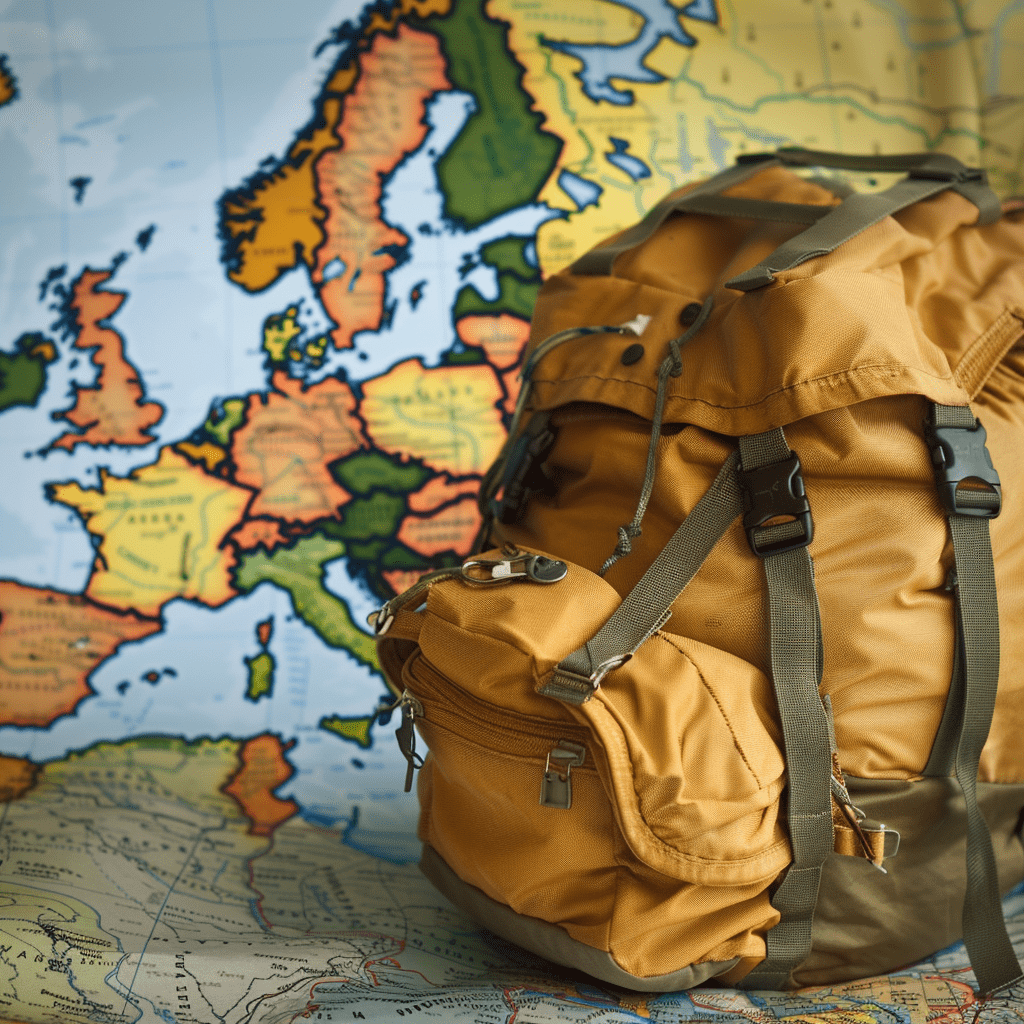Hey there, fellow adventurers! This guide is your go-to resource if you dream of extreme hiking in Europe.
Extreme hiking in Europe will dive into everything you need to know to conquer those epic hiking trails, from picking the perfect route to packing the right gear and soaking in the local culture.
Choosing Your Trail
So, where to begin? Europe offers a buffet of hiking trails catering to all tastes and skill levels. Imagine hiking amidst towering Alps, tracing ancient pilgrim paths, or conquering rugged Dolomite peaks. Each trail has its charm and challenges.
Let’s start with the Tour du Mont Blanc. This beauty loops through France, Italy, and Switzerland, offering jaw-dropping views of Europe’s highest peaks. It’s not for the faint-hearted, though, covering about 170 kilometers of varied terrain. You’ll need solid prep and stamina for this one.
If history and spirituality are more important, consider the Camino de Santiago in Spain. This pilgrimage route offers multiple trails, each with its own allure and difficulty level. It’s not just a hike; it’s a journey through centuries of culture and faith.
For a dramatic alpine adventure, head to The Dolomites in Italy. The Alta Via trails here wind through limestone giants, offering a thrilling challenge amidst some of Europe’s most breathtaking scenery.
When picking your trail, consider how long you want to hike, the comfortable terrain, and the season you’ll travel. Research trail conditions and check out recent hiker reviews to understand what to expect.
Essential Gear
Now, let’s talk gear. You wouldn’t go into battle without your armor, right? Well, think of your hiking gear as your armor against the elements. Here’s what you’ll need:
- Sturdy Hiking Boots: Invest in boots that support your ankles and have a good grip. They’ll be your best friends on rocky paths and muddy trails.
- Weather-Ready Layers: Pack light, moisture-wicking clothes that You can add or take away layers based on the weather. Think base layers, insulating mid-layers, and a waterproof shell for rain or wind.
- Sleeping Setup: A lightweight tent and a warm sleeping bag are must-haves, especially if you’re camping under the stars. Look for gear that’s compact and durable to handle the rugged outdoors.
- Navigation Tools: Bring a detailed map, a reliable compass, and a GPS device or smartphone with offline maps. You’ll need these to stay on track and navigate tricky trails.
- First Aid Kit: Remember to leave home with it! Pack essentials like bandages, pain relievers, blister treatments, and anything else for minor emergencies.
Physical Preparation
Now, let’s prepare your body for the adventure of a lifetime. Hiking through Europe’s landscapes demands strength, stamina, and a bit of grit. Here’s how to prep:
- Cardio Training: Get your heart pumping with hiking, running, cycling, or swimming. These will build your endurance for those long days on the trail.
- Strength Building: Strengthen your legs, core, and upper body with exercises like squats, lunges, planks, and weightlifting. You’ll need all the muscle power you can muster.
- Endurance Boosting: Gradually increase the length and intensity of your hikes to simulate actual trail conditions. Throw in a weighted backpack to prep your body for carrying gear.
Eat well, drink lots of water, and get a lot of rest to keep your body in peak hiking condition. You’ll thank yourself later when scaling those mountain passes like a champ.
Safety and Preparation
Extreme hiking in Europe safety first, adventurers! Before you hit the trail, make sure you’re prepared for whatever Mother Nature throws your way. Here’s how to stay safe:
- Know Your Trail: Research trail conditions, weather forecasts, and potential hazards. Check online forums or local ranger stations for the latest updates.
- Emergency Plan: Share your hiking plans with a trusted friend or family member. Include your route, estimated daily mileage, and emergency contacts. It’s better to be safe than sorry.
- Gear Check: Double-check your gear before setting off. Ensure everything’s in good shape and you have all the essentials, from navigation tools to emergency supplies.
Cultural and Environmental Considerations
Respect the land and its people as you hike through Europe. Here’s how to be a responsible adventurer:
- Respect Local Culture: learn a few words in the language and accept the way of life there. Wear the right clothes and pay attention to the area’s customs, especially in rural or sacred areas.
- Leave No Trace: Pack out all your trash, even biodegradables. Use designated campsites and minimize your impact on wildlife and vegetation.
- Support Local Communities: Stay in local accommodations, eat at family-run restaurants, and buy souvenirs from local artisans. Your money from tourists can contribute to the communities you visit.
Navigation and Route Finding
Navigation skills are critical to a successful hiking trip. Here’s how to stay on track:
- Map Reading: Study your trail map before hitting the trail—Mark key points like water sources, campsites, and trail junctions for easy reference.
- GPS Assistance: Use GPS devices or smartphone apps with offline maps. They’ll help you navigate tricky terrain and stay on course, even in remote areas.
- Signs on the Way: Pay attention to the signs on the trail and signage along the way. They’ll guide you through forests, over mountains, and across plains, ensuring you stay on the right path.
Food and Water Management
Fuel your adventure with good grub and plenty of hydration:
- Trail Snacks: Pack lightweight, high-energy foods like trail mix, energy bars, and dried fruit. They’ll keep you going when the going gets tough.
- Water Wisdom: Know where to find water along your route. Always carry a water filter or tablets that clean the water with you; your H2O is safe to drink.
- Hydration Habits: Drink water regularly to stay hydrated, especially when it’s hot outside or when you’re high up. Monitor your intake and replenish electrolytes with sports drinks if needed.
Overcoming Challenges
There Every trip has both good and bad parts. Here’s how to conquer the tough stuff:
- Weather Worries: Check the forecast and pack accordingly. Be prepared for rain, wind, or snow, depending on the season and region.
- Fatigue Fighting: Pace yourself and take breaks when needed. Listen to your body and know when to rest and refuel.
- Emergency Essentials: Carry a whistle, mirror, and emergency blanket in case of unexpected situations. Stay calm, assess the problem, and follow your emergency plan.
Accommodation Options
Rest up and recharge for the next day’s adventure:
- Camping Comfort: Set up camp in designated areas to minimize environmental impact. Choose flat, dry spots away from water sources and wildlife habitats.
- Mountain Huts and Hostels: Stay in alpine or local hostels for a comfy night’s sleep and a chance to connect with fellow hikers. Book in advance during peak seasons.
- Local Lodging: Support local economies by staying in guesthouses or bed-and-breakfasts. After a day on the trail, enjoy home-cooked meals and warm hospitality.
Celebrating the Journey
Take time to savor the sights, tastes, and experiences of your European hiking adventure:
- Foodie Finds Sample local cuisine, from hearty mountain dishes to coastal seafood delights. Treat yourself to regional specialties and tasty treats along the way.
- Cultural Connections: Immerse yourself in local traditions, festivals, and historical sites. Learn about the people and places that make each region unique.
- Reflections and Memories: Keep a journal or snap photos to capture the essence of your journey. Reflect on your achievements and the unforgettable moments you shared with new friends.
Conclusion
Congratulations, adventurers! You now know what to do and have the courage to tackle Europe’s most challenging extreme hiking in Europe. trails. Remember to plan, stay safe, and soak in every moment of your outdoor adventure. Whether scaling peaks or strolling through historic landscapes, enjoy the trip and the memories you’ll make.













